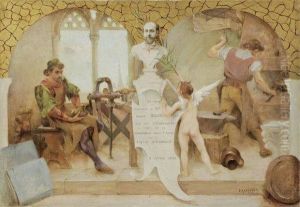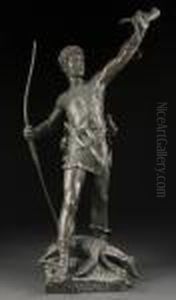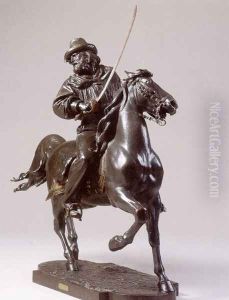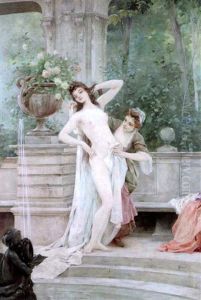Eugene Marioton Paintings
Eugène Marioton was a French sculptor and medalist born in 1854 in Paris, France. He was part of a family of artists, with both his brother Claudius Marioton and his uncle Auguste Marioton being accomplished sculptors as well. Eugène Marioton studied under Aimé Millet and Augustin-Alexandre Dumont, both notable sculptors of their time, which provided him with a strong foundation in the traditional sculptural techniques and principles of the 19th century.
Marioton was known for his classical style, often creating figures and busts that drew upon themes from mythology, history, and allegory. His works were characterized by their fine detail, dynamic poses, and expressive faces. He skillfully worked with various materials, including bronze, marble, and plaster, which allowed him to produce works with a wide range of textures and finishes.
Throughout his career, Eugène Marioton exhibited his sculptures at the Salon, the official art exhibition of the Académie des Beaux-Arts in Paris. He gained considerable recognition during his lifetime and was awarded several medals at these exhibitions, including a third-class medal in 1883 and a second-class medal in 1887. His works appealed to a broad audience and were often reproduced in different sizes, making them accessible to collectors of varying means.
In addition to his sculptures, Marioton also created decorative objects and contributed to public monuments. His artistic legacy includes not only his sculptures but also his influence on the decorative arts of the period. Marioton's career spanned the late 19th and early 20th centuries, a time of significant change in the art world. Despite this, he remained committed to the academic traditions of sculpture and did not venture into the emerging styles of modernism that characterized the art of the early 20th century.
Eugène Marioton passed away in 1933, leaving behind a substantial body of work that continues to be appreciated for its craftsmanship and adherence to the classical tradition. His sculptures can be found in museums, private collections, and public spaces, serving as a testament to the enduring appeal of traditional sculptural forms.



